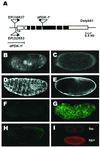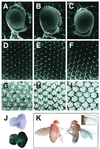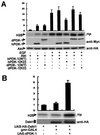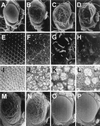Drosophila phosphoinositide-dependent kinase-1 regulates apoptosis and growth via the phosphoinositide 3-kinase-dependent signaling pathway
- PMID: 11344272
- PMCID: PMC33436
- DOI: 10.1073/pnas.101596998
Drosophila phosphoinositide-dependent kinase-1 regulates apoptosis and growth via the phosphoinositide 3-kinase-dependent signaling pathway
Abstract
Phosphoinositide-dependent kinase-1 (PDK-1) is a central mediator of the cell signaling between phosphoinositide 3-kinase (PI3K) and various intracellular serine/threonine kinases including Akt/protein kinase B (PKB), p70 S6 kinases, and protein kinase C. Recent studies with cell transfection experiments have implied that PDK-1 may be involved in various cell functions including cell growth and apoptosis. However, despite its pivotal role in cellular signalings, the in vivo functions of PDK-1 in a multicellular system have rarely been investigated. Here, we have isolated Drosophila PDK-1 (dPDK-1) mutants and characterized the in vivo roles of the kinase. Drosophila deficient in the dPDK-1 gene exhibited lethality and an apoptotic phenotype in the embryonic stage. Conversely, overexpression of dPDK-1 increased cell and organ size in a Drosophila PI3K-dependent manner. dPDK-1 not only could activate Drosophila Akt/PKB (Dakt1), but also substitute the in vivo functions of its mammalian ortholog to activate Akt/PKB. This functional interaction between dPDK-1 and Dakt1 was further confirmed through genetic analyses in Drosophila. On the other hand, cAMP-dependent protein kinase, which has been proposed as a possible target of dPDK-1, did not interact with dPDK-1. In conclusion, our findings provide direct evidence that dPDK-1 regulates cell growth and apoptosis during Drosophila development via the PI3K-dependent signaling pathway and demonstrate our Drosophila system to be a powerful tool for elucidating the in vivo functions and targets of PDK-1.
Figures





References
-
- Alessi D R, James S R, Downes C P, Holmes A B, Gaffney P R, Reese C B, Cohen P. Curr Biol. 1997;7:261–269. - PubMed
-
- Alessi D R, Deak M, Casamayor A, Caudwell F B, Morrice N, Norman D G, Gaffney P, Reese C B, MacDougall C N, Harbison D, et al. Curr Biol. 1997;7:776–789. - PubMed
-
- Stephens L, Anderson K, Stokoe D, Erdjument-Bromage H, Painter G F, Holmes A B, Gaffney P R, Reese C B, McCormick F, Tempst P, et al. Science. 1998;279:710–714. - PubMed
-
- Downward J. Curr Opin Cell Biol. 1998;10:262–267. - PubMed
Publication types
MeSH terms
Substances
LinkOut - more resources
Full Text Sources
Molecular Biology Databases
Miscellaneous

